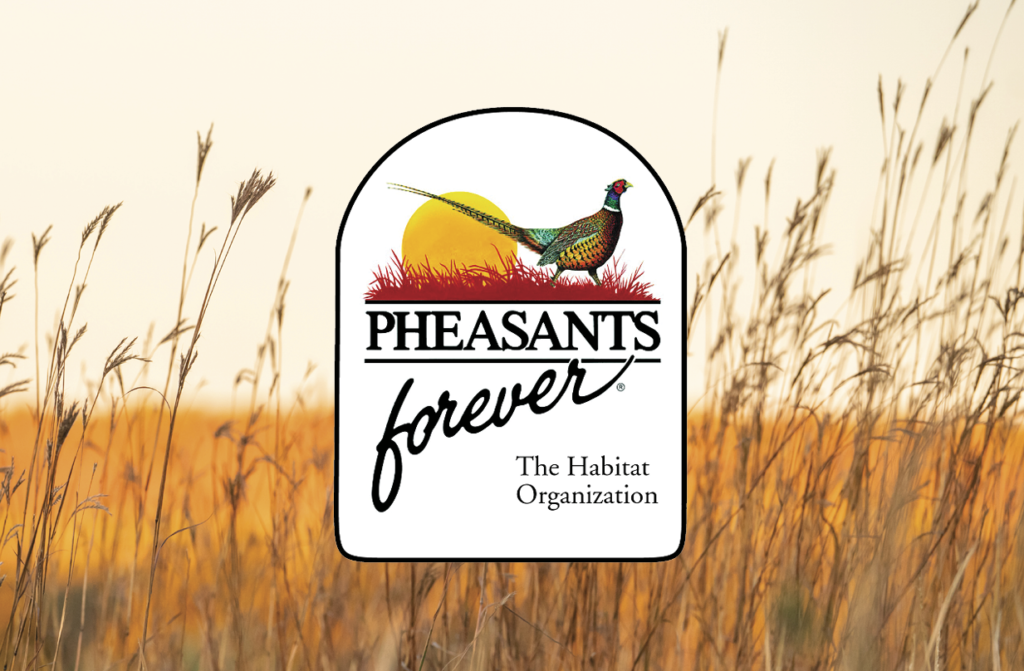IDENTIFYING PRIME PHEASANT HABITAT FOR HUNTING

LOOK FOR THESE 3 HABITAT COMPONENTS WHEN SEEKING A GOOD PLACE TO HUNT PHEASANTS
By Tom Carpenter
I will never drop you a pin of my specific pheasant hunting spots and honeyholes. They are out there on public land for all of us to find. Would you share yours?
Tired legs, worn-out bootleather and beat-up paw pads are the prices we and our canine companions pay for good hunting spots. That currency is worth much.
But I will tell you what to look for when evaluating your own prospective pheasant hunting places. It all comes down to habitat: Understanding what pheasants need, and knowing what habitat features and components to look for on the landscape.
1. GRASS
Pheasants need grass. Period. It might be native prairie, a prairie restoration, an overgrown meadow or fallow field, Conservation Reserve Program (CRP) or related conservation program lands, nicely managed pasturelands, buffer strips along waterways or wetlands, you name it.
Pheasants hide in grass, they nest in grass, they will feed in grass, and they raise their young in grass.
Grass in any form is better than no grass. But all grass is not created equal. Geek out a little and learn how to identify native prairie grasses such as big and little bluestem, grama, Indian grass, June grass and others. Those are best.
Just as good, and maybe even a little better, are the class of plants known as “forbs” (more commonly known as wildflowers) that can be clumped into this habitat category. Forbs are broad-leaved and often very stiff-stemmed, a combination that provides good cover overhead and pathways for birds to travel down below.
You will know forbs by their broader leaves and, very often, the dried flower heads waving in the autumn breeze. Crush one in your fingers, smell the fragrance, let the seeds drop to replenish the land.
Grass (which includes wildflowers) is the first thing you need, and preferably lots of it, to find pheasants.
2. GRAIN
While pheasants might eke out a living without grain fields of some type, bird numbers will be scant without some corn or soybeans, or small grains such as wheat, oats (one of God’s gifts to pheasants, but more on that another time), barley, millet, rye or sorghum. Ringnecks will eat other foods (think fruits berries and insects) at other times of year, but most of the year – fall and winter, when we hunt – it is high-calorie grains that keep the birds’ engines stoked.
Stubble fields are ideal for gleaning any grain. Plowed fields can also offer tidbits for gleaning.
Can you find pheasants where there isn’t grain around? Sure. Are the birds going to be thick? No.
The farthest I have ever shot a pheasant from a grainfield was 6 miles. But I will bet you a case of shotgun shells that 90 percent of the pheasants I have ever shot were within a half mile – and at that, most of them within a quarter mile and usually much less – of grain land of some type.
3. CATTAILS OR BRUSH: WINTER-TYPE COVER
Pheasants need more than just grass and grain to thrive. When times get tough – meaning wintry conditions but also hunting pressure – birds need places to hide out and survive in, on their home range.
That home range, by the way, isn’t big. In fact, it is likely the land you can see from where you stand.
Look for one or more (preferably more) of these features:
*cattails
*thickets of woody cover (willows, dogwood, plum, tag alders, other brush)
*hedgerows of the above-named woody covers
*berry brambles and other thorny hellholes
*Notable: Trees and woods don’t offer much to pheasants, except perches for their avian predators to hunt from
3 BONUS TIPS
MIX IT UP
The best pheasant habitat mixes and melds the above three habitat components: grass (which includes wildflowers), grain, and winter-style cattaily or woody escape cover. I like the word “mosaic” which is opposite of “monoculture.”
MAKE IT BIG
When studying map books or onX while looking for public land places to hunt, search out what might be termed a “complex” – a series of lands in an area (wildlife areas, waterfowl production areas, walk-in, even private lands that might hatch birds) and start your search there. Think many hundreds of acres, or a thousand-plus acres, or more, of contiguous or close habitat.
There will be more birds, and there will be more chance they have stayed where you can still hunt them.
Isolated tracts can be fine too. But complexes will offer more consistent opportunities.
PAY ATTENTION
The more you hunt pheasants, the more you will learn the kinds of places they like. Just hunt. Whenever a bird flushes (and especially when you get one!) take one moment to think about what kind of cover the bird was in. It was not there by accident. Build your own catalog of knowledge as the miles add up, the boot leather wears down, and the dog’s paws go rough.
Tom Carpenter shot his first rooster behind his Basset hound Nikki in 1974, and has chased ringnecks far and wide ever since.
Photo by Matt Addington.
#pathtotheuplands
SHARE ON
You may also like
The role corn plays for gamebirds and economies ac...
Sportsmen’s conservation policy issues from publ...
Sportsmen’s conservation policy issues from publ...


























